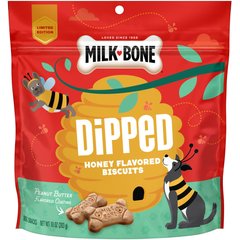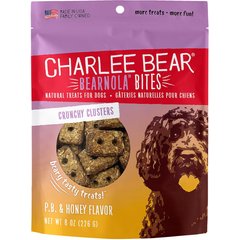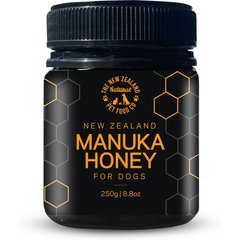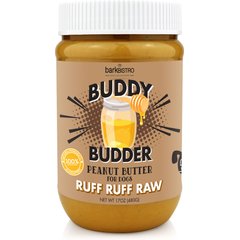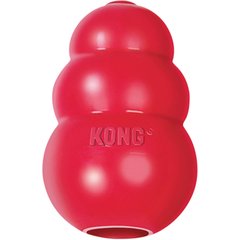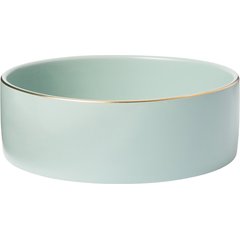Can Dogs Eat Honey?
Rasulovs/iStock/Getty Images Plus via Getty Images
Honey is a go-to when you want to make a treat even sweeter, but can dogs eat honey too? Is honey safe for dogs?
Yes, honey is a natural sweetener that does offer some health benefits to dogs—but you don’t want to give them too much.
Like most human foods, honey comes with benefits and risks. Here’s everything you need to know.
Always check with your veterinarian before giving your dog any new foods, especially “people foods.” What might be OK for one dog might not be good for your dog, depending on multiple factors such as their age, health history, health conditions, and diet. Dogs on prescription diets should not be fed any food or treats outside the diet unless your veterinarian tells you it’s fine to do so.
Can Dogs Have Honey?
Yes, dogs can have honey in moderation. However, honey is high in sugar and calories, so you should only give it to your dog as an occasional treat.
However, avoid giving raw (unpasteurized) honey to dogs with compromised immune systems, like those on chemotherapy, and puppies under the age of 1.
Raw honey can contain spores of Clostridium botulinum, which is bacteria that causes botulism, a potentially fatal neurological disease. A puppy’s immune system isn’t fully developed until about 1 year old, and it can be harder for a developing immune system to fight these bacteria off.
Recommended Products
Is Honey Good for Dogs?
Honey isn’t just nontoxic and completely safe for healthy, fully developed dogs in small quantities, it has some health benefits, too.
-
Honey is rich in antioxidants. Antioxidants help protect your pet’s body cells from damage.
-
Honey can help with wound care. Certain types of honey, such as manuka honey, which is higher in antimicrobial compounds than other honey, can even help with wound care because the compounds inhibit bacterial growth.
-
Honey is filled with vitamins and minerals. They include:
-
Ascorbic acid
-
Pantothenic acid
-
Niacin
-
Riboflavin
-
Calcium
-
Copper
-
Iron
-
Magnesium
-
Manganese
-
Phosphorus
-
Potassium
-
Zinc
-
Recommended Products
Is Honey Bad for Dogs?
Although honey has several healthy properties, it’s very high in sugar. And if dogs eat sugar repeatedly over time (or even just a lot at once!), it can harm their health.
Too much sugar can give your dog an upset stomach. This will typically show up in minor, yet uncomfortable, symptoms such as:
But if your dog eats a lot of sugar in general it can contribute to obesity, which can increase your dog’s risk of diabetes.
How Much Honey Can Dogs Safely Eat?
Honey shouldn’t be a regular part of your dog’s diet. Treats of any kind should make up no more than 10% of your dog’s daily calories. The other 90% should come from a well-balanced dog food diet.
Always contact your veterinarian first before giving your dog any new treat, and start slowly to see how your dog tolerates the honey.
Based on their size, dogs should eat no more than the following portions of honey once or twice a week:
| Dog Size | Serving Size |
| Extra-small dogs (2–10 pounds) | 1/8 teaspoon |
| Small dogs (11–20 pounds) | 1/4 teaspoon |
| Medium dogs (21–50 pounds) | 1/2–1 teaspoon |
| Large dogs (51–90 pounds) | 2 teaspoons |
| Extra-large dogs (91+ pounds) | 1 tablespoon |
How To Safely Feed Honey to Dogs
You can let your dog lick some honey off a spoon, but there are other ways to safely feed honey to dogs that are a bit more exciting.
1. Baked Into a Homemade Doggy Treat
Honey is a safe ingredient for homemade dog treats. If you want to go all out and spoil your dog, cook them some pork meatballs with a honey glaze. You can also try this dog-safe hot chocolate.
2. Frozen Into a KONG Toy
Mix a little honey into some xylitol-free peanut butter, stuff it into a KONG toy, and let it freeze overnight. It’s not only a tasty treat, but it’s a great way to keep your pup occupied!
Recommended Products
3. Blended Into a Doggy Smoothie
Honey is a great addition to a doggy smoothie. Just combine a small amount of honey with some dog-safe fruits and veggies, along with some plain, sugar-free, xylitol-free Greek yogurt, and blend. If your dog is lactose-intolerant, use dairy-free yogurt or coconut milk instead.
The smoothie can be served on its own in a bowl or as a topper for your dog’s regular food.
Recommended Products
Dogs and Honey FAQs
Does honey help with a dog’s cough?
It’s not clear if honey can help with a dog’s cough the way it does for humans. Always contact your veterinarian if your dog is coughing before trying any at-home remedies. There could be many different conditions causing the cough—and some are more serious than others.
Can honey be toxic to dogs?
Honey isn’t toxic to dogs. However, too much honey can increase blood sugar and contribute to weight gain.
Is honey a natural antibiotic for dogs?
Honey has natural antibiotic properties, but it shouldn’t be used in place of prescription antibiotics if your dog has an infection. Talk to your vet about how honey may or may not fit into your dog’s healthcare plan.

